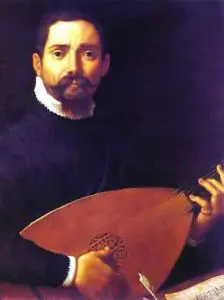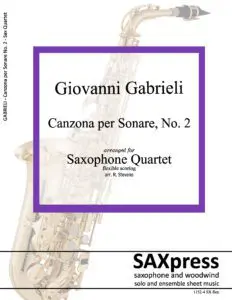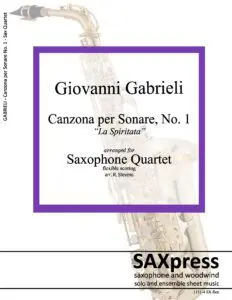Giovanni Gabrieli
Giovanni Gabrieli was an Italian composer and organist. He was one of the most influential musicians of his time, and represents the culmination of the style of the Venetian School, at the time of the shift from Renaissance to Baroque idioms.
Gabrieli was born in Venice. He was one of five children, and his father came from the region of Carnia and went to Venice shortly before Giovanni’s birth. While not much is known about Giovanni’s early life, he probably studied with his uncle, the composer Andrea Gabrieli, who was employed at St Mark’s Basilica from the 1560s until his death in 1585. Giovanni may indeed have been brought up by his uncle, as is implied by the dedication to his 1587 book of concerti, in which he described himself as “little less than a son” to his uncle.
Giovanni also went to Munich to study with the renowned Orlando de Lassus at the court of Duke Albert V; most likely he stayed there until about 1579. Lassus was to be one of the principal influences on the development of his musical style. By 1584 he had returned to Venice, where he became principal organist at St Mark’s Basilica in 1585.
Gabrieli’s career rose further when he took the additional post of organist at the Scuola Grande di San Rocco, another post he retained for his entire life. San Rocco was the most prestigious and wealthy of all the Venetian confraternities, and second only to San Marco itself in the splendour of its musical establishment. Some of the most renowned singers and instrumentalists in Italy performed there and a vivid description of its musical activity survives in the travel memoirs of the English writer Thomas Coryat. Much of his music was written specifically for that location,[2] although he probably composed even more for San Marco.
San Marco had a long tradition of musical excellence and Gabrieli’s work there made him one of the most noted composers in Europe. The vogue that began with his influential volume Sacrae symphoniae (1597) was such that composers from all over Europe, especially from Germany, came to Venice to study. Evidently, he also instructed his new pupils to study the madrigals being written in Italy, so not only did they carry back the grand Venetian polychoral style to their home countries, but also the more intimate style of madrigals; Heinrich Schütz and others helped transport the transitional early Baroque music north to Germany, a trend that decisively affected subsequent music history. The productions of the German Baroque, culminating in the music of J.S. Bach, were founded on this strong tradition, which had its roots in Venice.
Though Gabrieli composed in many of the forms current at the time, he preferred sacred vocal and instrumental music. All of his secular vocal music was relatively early in his career; he never wrote lighter forms, such as dances; and later he concentrated on sacred vocal and instrumental music that exploited sonority for maximum effect.[5] Among the innovations credited to him – and while he was not always the first to use them, he was the most famous of his period to do so – were dynamics; specifically notated instrumentation (as in the famous Sonata pian’ e forte); and massive forces arrayed in multiple, spatially separated groups, an idea which was to be the genesis of the Baroque stile concertato, and which spread quickly to northern Europe, both by the report of visitors to Venice and by Gabrieli’s students, who included Hans Leo Hassler and Heinrich Schütz.
Gabrieli was increasingly ill after about 1606, at which time church authorities began to appoint deputies to take over duties he could no longer perform. He died in 1612 in Venice, of complications from a kidney stone.
Giovanni Gabrieli works available at SAXpress
Showing all 2 resultsSorted by latest



